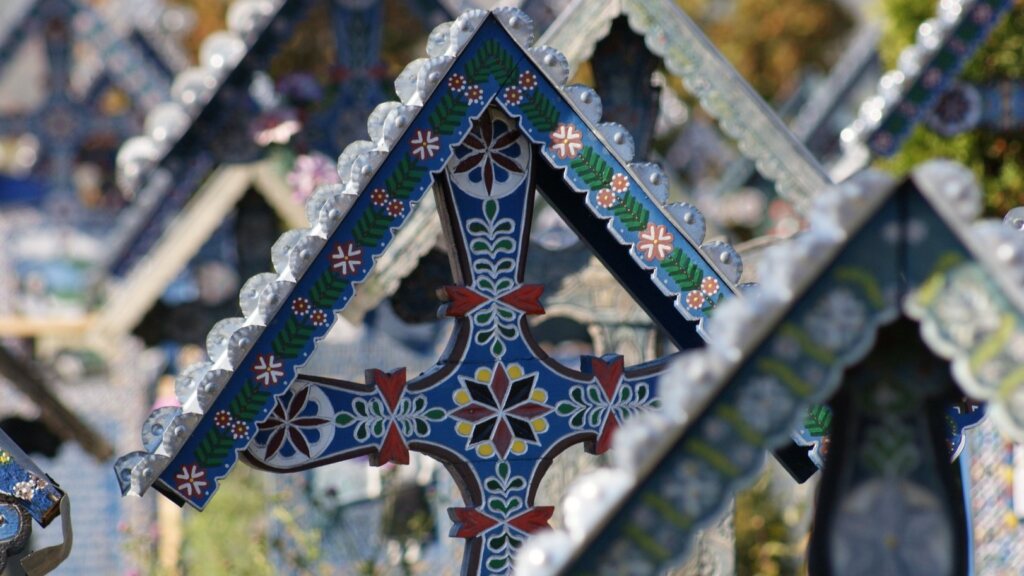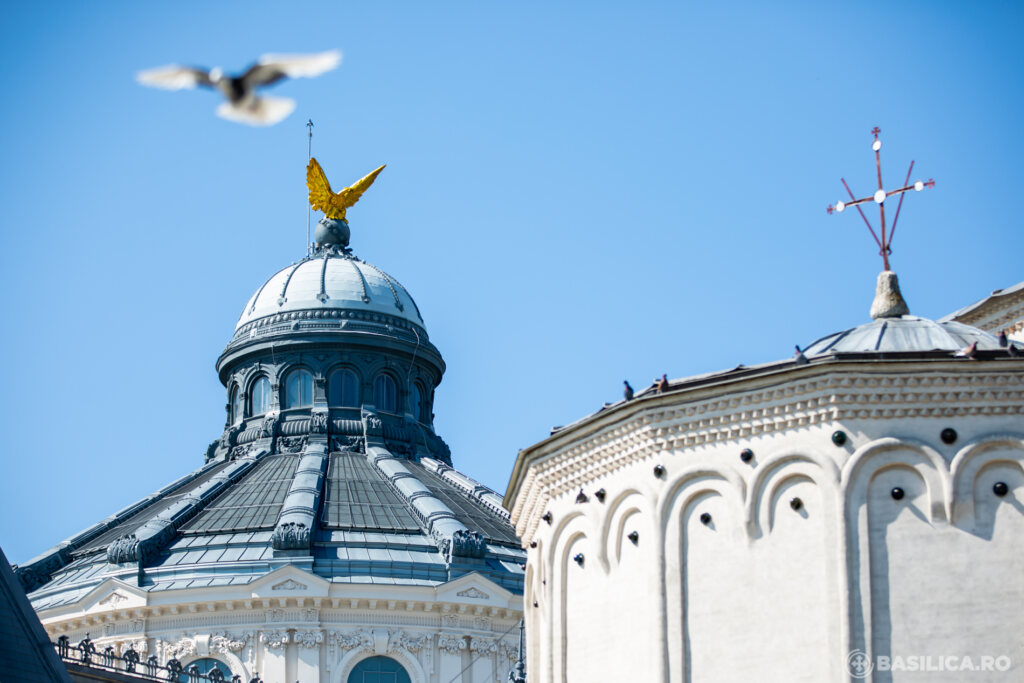This year, on 12 April 2015, the Orthodox Church celebrates the Holy Great Sunday of the Easter. On this Sunday, “we celebrate the life giving Resurrection of Jesus Christ, our Lord and Saviour.
The Resurrection of the Lord is the greatest feast of the Orthodox Christians which the Church chants call “festival of festivals and feast of feasts”. It is the most important event in the history of humankind and it differentiates Christianity from all the other religions because the head of the Christian Church, Christ, was risen from the dead, showing us that He was not only an extraordinary man, but also true God and true Man incarnated for us and for our salvation. For us, the Christians, the reality of the Resurrection of Christ is the basis of our faith, because Saint Paul the Apostle says: “And if Christ has not been raised, your faith is futile.” (1 Corinthians 15:17), showing us that the truth and power of our Orthodox witness is due to the Resurrection of Jesus Christ, our Lord and Saviour, who is the guarantee of the resurrection of all of us. The Church has celebrated the Resurrection of Christ since the time of His descent to hell, where from He released the souls of the righteous of the Old Testament from under the domination of death and of the devil, as we learn from the sinaxarion of the Holy Great Saturday: the Word of God stayed with the body in the grave, and His pure divine soul descends to hell too.
Today, the hell is embittered because its power was annihilated
This thing can be also seen in the iconography of the Resurrection of the Lord, where the image of the descent of the Jesus Christ, our Lord, into the hell is considered the traditional icon of the Resurrection in Orthodoxy. The iconic representation of the Resurrection as the descent of Jesus Christ, our Lord, to hell is related to the Bible argument of the Epistle of Saint Peter the Apostle where from we learn: “For Christ also suffered once for sins, the righteous for the unrighteous, to bring you to God. He was put to death in the body but made alive in the Spirit. After being made alive, he went and made proclamation to the imprisoned spirits” (1 Peter 3:18-19). Therefore, Jesus Christ, our Saviour, descended to hell with His divine soul, into the prison of souls, where He gave the good news to the dead. We learn the same thing from the same Epistle of Saint Peter the Apostle 4:6: “For this is the reason the gospel was preached even to those who are now dead, so that they might be judged according to human standards in regard to the body, but live according to God in regard to the spirit”. In this sense, the time of the Lord’s descent to hell is very well defined in the Church chants. Thus, the troparions of the Easter Vesper show us that today the hell cries, sighs and is embittered, because its power was annihilated, because Christ released all those who had been under its domination for centuries.
Very important for understanding these facts is what Saint John Chrysostom says on the Easter day: “Let no one fear death, for the Savior’s death has set us free. He that was held prisoner of it has annihilated it. By descending into Hell, He made Hell captive. He embittered it when it tasted of His flesh. And Isaiah, foretelling this, did cry: Hell, said he, was embittered, when it encountered Thee in the lower regions. It was embittered, for it was abolished. It was embittered, for it was mocked. It was embittered, for it was slain. It was embittered, for it was overthrown. It was embittered, for it was fettered in chains. It took a body, and met God face to face. It took earth, and encountered Heaven. It took that which was seen, and fell upon the unseen. O Death, where is your sting? O Hell, where is your victory? Christ is risen, and you are overthrown”
The news of the Resurrection spreads all over the world
In the same sense, Saint John Damascus presents the teaching of the Church on the descent of Christ to hell in a troparion of the Easter canon: “You went down to the deepest parts of the earth, and you shattered the everlasting bars of those that those that were fettered, O Christ. And on the third day, like Jonas from the whale, you arose from the tomb”. Thus, the descent to hell was designed to smash the gates of the kingdom of darkness, namely to end the reign of the devil and to announce the dead the salvation so that the entire humankind should hear the news of His Gospel.
The Resurrection of the Lord occurred on Sunday, at dawn, as we learn from the sinaxion of the Easter day: “The Resurrection of the Lord was as follows: At midnight, while the soldiers were guarding the tomb, it was a great earthquake and an angel came down and rolled back the tombstone. The soldiers saw that, were frightened and ran away; afterwards, the women came to the tomb, Saturday, at midnight, close to dawn. Resurrection was first seen by the Mother of God who, as the Gospel according to Matthew reads, was standing at the tomb together with Mary Magdalene. But not to doubt the Resurrection, because of her mother love for her Son, the Evangelists say that the Lord appeared first to Mary Magdalene. She has also seen the angel sitting on the stone and, bowing down, she has also seen those inside the tomb who announced the Resurrection of the Lord and said: “He has been raised, He is not here; here is the place where He lay”.…”
How do we celebrate Easter?
The fact that it was the Mother of God who saw Jesus Christ, our Lord, first is confirmed by the chants of the Church in which we say: “The angel cried to the one full of grace: Pure Virgin, rejoice; and I say again: rejoice, because your Son was raised the third day from the tomb”. The evangelical texts do not clearly show that the Mother of God saw Christ resurrected. There are sentences referring to “the other Mary”. Saint Evangelist Matthew writes: “After the Sabbath, at dawn on the first day of the week, Mary Magdalene and the other Mary went to look at the tomb.” (Matthew 28:1). Another text speaks about James’ Mary (Luke 24:10). When interpreting these situations, Saint Gregory Palama says that it was the Mother of God who came to the tomb first. She learned from the beginning from Archangel Gabriel that her Son was risen, and then she saw Him, and it was only her that could hold His feet in her hands. Saint Gregory Palama also says that it was right and correct that the Most Holy Birth Giver of God to be the first to learn about Resurrection and the first to see the Risen Christ. The fact that the Saints Evangelists avoided saying directly that the Most Holy Birth Giver of God was the first to see Him had an important motivation, as Saint Gregory Palama said too, because they did not want to give those who did not believe the opportunity to doubt the Resurrection, as long as it was seen by Christ’s Mother.
The Resurrection of Christ must not be celebrated as a historical and social event, but as an existential one, because we prepared ourselves 7 weeks for it, because, as the Holy Fathers say, both the physical senses and the spiritual ones must be purified to receive the joy of the Resurrection of the Lord: “Let us purify our senses and see Christ shining in the distant light of the Resurrection. And singing an ode of victory, shining let us hear Him saying: rejoice” (Saint John Damascus). Therefore, Saint Gregory the Theologian urges us not to turn the Resurrection into a lay party, but celebrate it with holiness and move away from the lay spirit. This is why let us honour the Resurrection of the Lord and say: Christ was risen from the dead trampling death by death, giving life to those from the graves!






